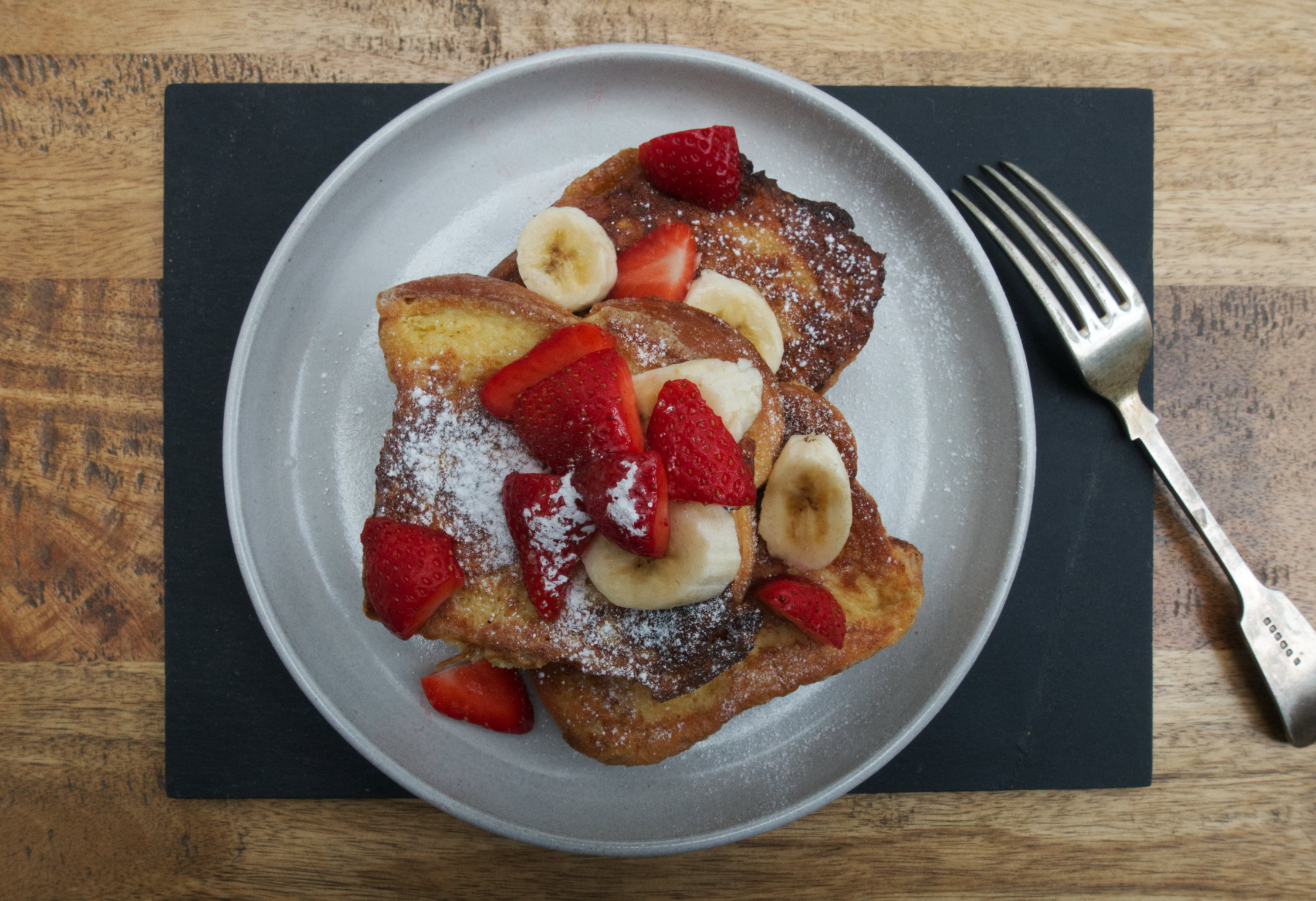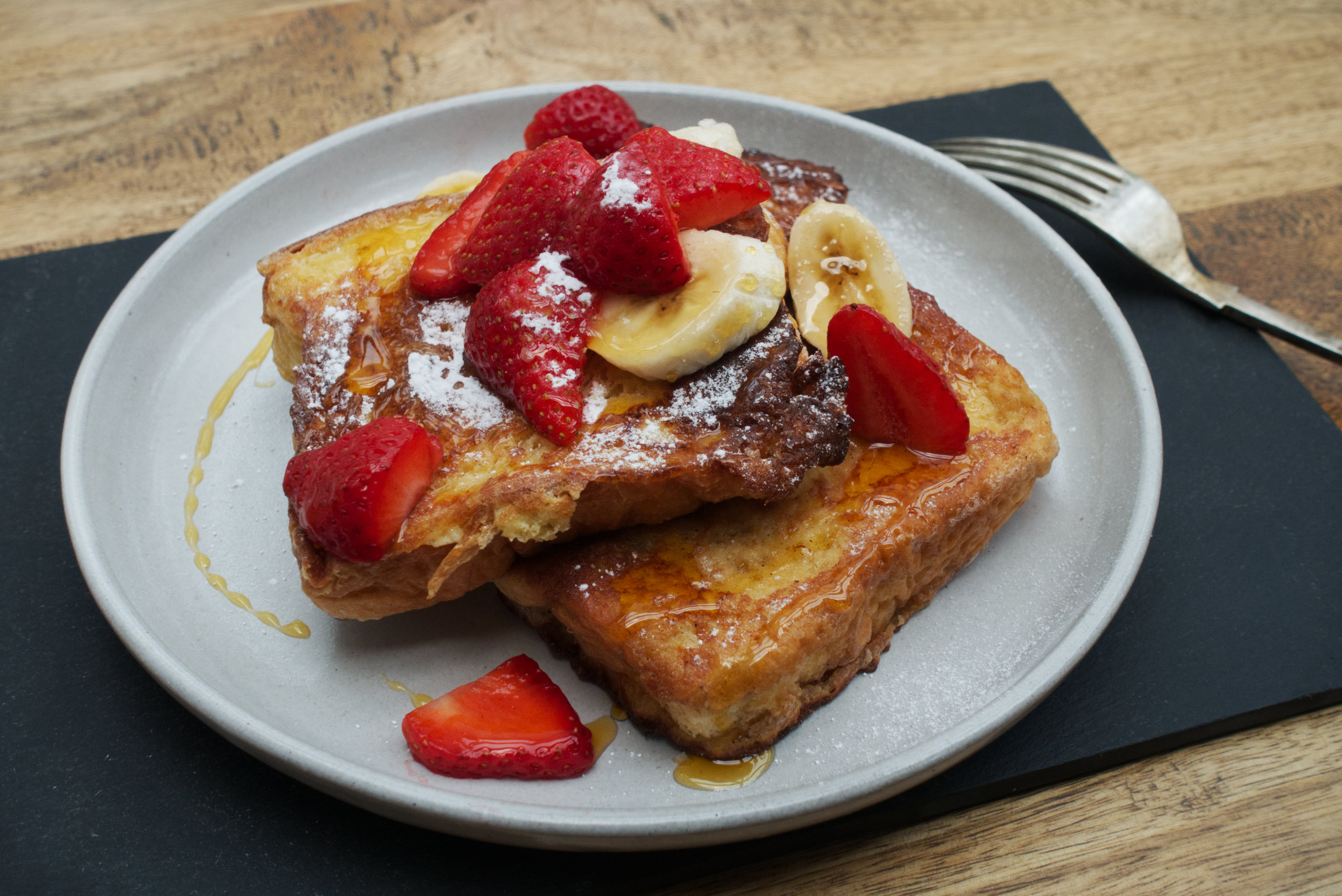A rose by any other name may smell as sweet, but somehow, eggy bread just doesn’t hold the same appeal as French toast, does it? The latter has become a bougie brunch dish, while the former languishes in second-hand student cookbooks. At heart, they’re the same thing: slightly stale bread soaked in an egg-based custard, then fried. Whatever pretensions French toast may have (and however delicious it might be), its origins are a cheap dish that improves and extends the life of stale bread with just a couple of eggs and a knob of butter.
Of course, they aren’t the only two names for this stuff: unsurprisingly for an economical dish, there are countless variations of French toast around the world – pain perdu in France, torrijas in Spain, Bombay toast in India, and Arme Riddere in Denmark and Norway and Arme Ritter in Germany. The Danish, Norway and German names for the eggy bread roughly translate as ‘poor knights’ and sometimes in old English cookery books, the dish will be called ‘Poor knights of Windsor’, although the connection between the dish and the military order of the same name established by Edward III are spurious.
The first reference to something resembling French toast is in the Latin Apicius cookbook, from the 1st century CE. Here, bread is soaked in milk and beaten eggs, then fried in oil and drizzled with honey. I, sadly, am only too familiar with this. We learnt about this particular Roman delicacy in School, and were encouraged to bring it into class: and so we did. 25 kids lugging pallid, egg-fried bread, sticky with honey in our school bags, sitting in tupperware filled with condensation, unrefrigerated, waiting for the afternoon class. It was soggy and bland and cold, but school children are gannets – or at least I was. Even so, it’s honestly a miracle that I haven’t been put off for life.
Of course, proper French toast is a little different. Thickly sliced white bread is soaked in a simple custard, made from eggs and milk, with a little vanilla and cinnamon if you fancy – if the bread is a little stale, it will soak up more of the custard, and will stop it falling apart. I make that custard with cream, although you really don’t have to; and I use brioche for the bread. Fried in butter, it is squidgy inside, and burnished gold on the outside. Look, it’s not exactly a breakfast or brunch I have every day, but it is fantastic.
I like my French toast with sliced berries and banana, natural yoghurt, and a swirl of maple syrup, but really it suits any fruit you fancy; for lots of French toast aficionados, crisp bacon is obligatory, but others prefer to keep it simple with just an extra pat of butter, melting on top. You can keep the cooked French toast warm and crisp in a low oven while you cook the rest of the slices – particularly useful if you’re making brunch for more than just you and one other!

French toast
Makes: 4 slices
Takes: 15 minutes
Bakes: No time at all
4 thick slices of brioche or stale white bread
2 eggs
½ teaspoon vanilla paste
¼ teaspoon ground cinnamon
50 ml cream or whole milk
25g salted butter, divided
1 tablespoon vegetable oil, divided
- In a large, shallow dish, whisk together the eggs and the cream or milk along with the vanilla paste and cinnamon.
- Lay the slices of brioche or bread in a single layer in the custard, and leave for 3 minutes, before carefully turning the bread, and leaving for another 3 minutes.
- Place half a tablespoon of vegetable oil and half of the butter in a heavy-bottomed frying pan. When the butter starts to foam, add two slices of the soaked bread.
- After two minutes, carefully lift the bread: if it’s golden brown, turn over, if it’s still looking a little pallid, leave for another minute. Cook for another 2-3 minutes on the other side. Wipe out the butter from the pan with kitchen roll, add the remaining vegetable oil and butter and, once the butter is foaming, repeat the cooking process with the remaining slices of bread.







Comments